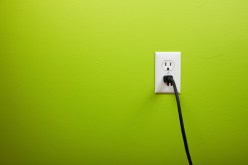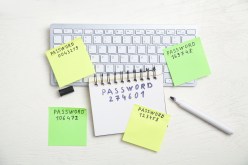How to Get the Most Accurate Digital Thermometer Readings at Home
As the COVID-19 pandemic continues, grocery stores, retail shops, restaurants, museums and healthcare facilities around the world are finding ways to adapt to the “new normal.” Even in countries where cases are way down, folks would rather be safe than sorry, especially as experts have yet to create an effective vaccine. Enter: temperature checks.
While some folks have been administering at-home temperature checks since March as a way to ensure they aren’t afflicted by the novel coronavirus, others may want to start doing so now. That is, things won’t be calming down any time soon — being prepared is essential. So, whether you’re instituting at-home temperature checks during the COVID-19 pandemic or prepping for future flu seasons, we’ve got the best digital thermometers for you — along with some handy tips and tricks for ensuring accurate, at-home readings.
What Are the Different Types of Digital and Electronic Thermometers?
When it comes to matters of health, it’s important to go back to basics. For many of us, thermometers aren’t a daily-use item. (Of course, that might’ve shifted in the wake of COVID-19.) Point being, there’s no shame in quickly reviewing the “how tos” of using a digital thermometer.
Here’s a breakdown of the most common types of digital thermometers:
- “Regular” Digital Thermometers: Most digital thermometers can record temperatures from the mouth, armpit or rectum, the latter of which may cause discomfort in infants. Additionally, oral readings require the patient to refrain from eating or drinking 15 minutes prior to getting a reading. For both the oral and armpit methods, movement — breathing through the mouth, fidgeting — may affect the accuracy.
- Digital Ear Thermometers (Tympanic Thermometers): These devices use an infrared ray to measure the temperature inside the ear canal. Although quick, accurate and fairly comfortable, in-ear thermometers aren’t recommended for newborns — and too much earwax, or a curved ear canal, might affect the readings.
- Temporal Artery Thermometers: Colloquially dubbed “forehead thermometers,” these devices also use infrared technology to measure the temperature of the temporal artery in the forehead. By far, these are the most comfortable thermometers — and they’re great for all ages. The only drawback? They’re usually pricier.
Experts recommend steering clear of pacifier thermometers (difficult to use), smartphone thermometers (inaccurate) and mercury thermometers (obvious reasons there).
Calibrate Correctly: Learn How to Use Digital Thermometers to Get Accurate Readings at Home
First things first: A normal body temp is about 98.6°F (that’s 37°C) — and this can vary a degree or so (or half a degree in Celsius terms) without being considered a fever, which in adults, is 100.4 °F (38°C) or above. So, how do you use each type of popular digital and electronic thermometer to get accurate results? We’ve broken it down.
Please note: All thermometers should be cleaned appropriately before each use. For most accurate usage, follow the specific instructions that come with your thermometer — the following tips are just general guidance.
- Axillary (under the armpit): Although not as accurate as an oral or rectal temp check, the under-the-armpit method is often a bit easier. Place the tip of the thermometer in the well of your armpit and keep your arm pressed to your side. A beeping sound should indicate when the thermometer is done. Remember: Don’t fidget.
- Oral: Place the tip of the thermometer under your tongue and close your mouth. Breathe through your nose if possible so as not to affect the reading. Again, a beeping sound should indicate when the thermometer is done.
- Rectal: Although this method is most commonly used for infants, children older than 3 can still be administered a temperature check with this kind of thermometer. In most cases, you’ll cover the tip of the thermometer with a petroleum jelly (like Vaseline), place the infant on their back with their knees bent and carefully insert the thermometer (about an inch) into the infant’s rectum. For safety reasons, make sure the patient remains still until the thermometer is done reading their temperature.
- Tympanic (in-ear): Gently tug the patient’s ear, pulling it up and back to help straighten the ear canal and make a clear pathway to the inner ear and eardrum. Gently insert the thermometer until the ear canal is sealed off. Again, a beeping sound should indicate when the reading is done. Avoid in-ear thermometers if the patient has an earache or earwax buildup.
- Temporal artery (forehead): Like a point-and-shoot camera, simply aim these thermometers at the center of the patient’s forehead. While some require skin contact, others are no-touch thermometers.
The Best At-Home Digital Thermometers on the Market
Now that you know more about each type of digital and electronic thermometer, as well as how to administer temperature checks to different areas of the patient’s body, it’s time to select an at-home thermometer that works best for you.
Here are our suggestions:
- Best Thermometer for Value: Although it’s not as fancy as other at-home devices, the Femometer Digital Thermometer provides great value for the money. Delivering accurate readings within minutes, this thermometer is well-suited to all ages, from infants to adults, and allows for rectal, armpit and oral use. The only drawback? Some users wish the display screen was a tad larger.
- Best Forehead Thermometer: These days, more and more businesses are administering COVID-19 temperature checks with forehead thermometers, which limit contact between users and potential patients. If you aren’t a fan of in-ear readings, you’ll be happy to learn that forehead models, like the GoodBaby infrared touchless thermometer, provide accurate readings in a second, all thanks to the device’s innovative infrared technology. Despite its name, the device is suitable for all ages, but the backlit LCD and mute feature certainly make it great for taking your baby’s temp in the dark. Another added bonus? If you’re tracking your temp readings (or a family member’s), this thermometer can store up to 35 temperature values.
- Best Multitemperature Thermometer: The Caroune digital thermometer definitely has some bells and whistles — literally. A buzzer alarm indicates when the readings are complete and if the user is feverish, though if you’re worried about waking family members, that can be silenced. Additionally, it allows users to switch between Fahrenheit and Celsius within a matter of seconds and provides both forehead and in-ear readings.
- Best Thermometer for Adults: Although the iProven medical thermometer may not have all of the bells and whistles comparable products on the market have, it delivers accurate results in seconds — without any hassle. Versatile, easy-to-clean and suitable for all ages, this thermometer is a must-have in any medicine cabinet.
- Best Thermometer for Kids: When you’re taking your child’s temperature, half the battle can be getting them to sit still, especially when you’re about to stick a strange device in their ear. The Anthsania thermometer not only provides incredibly fast and accurate in-ear readings, but it also doubles as a forehead thermometer thanks to some nifty infrared technology. The versatility makes your job easier — no matter your child’s comfort level. Best of all, the handy fever-alarm function means the four-color backlight LCD display will change to white, green, yellow or red to indicate the results.
- Best Thermometer for Infants: If your infant is under the weather, you don’t want to cause any additional discomfort, nor do you want to wake them up for a quick temperature check if they’re already fast asleep. Luckily, the ANKOVO no-touch thermometer uses infrared technology to generate accurate readings in seconds — and all you have to do is point the device at your baby’s forehead. Users also love the backlit LCD display, which allows you to take temps in the dark without turning on an intrusive lamp.





